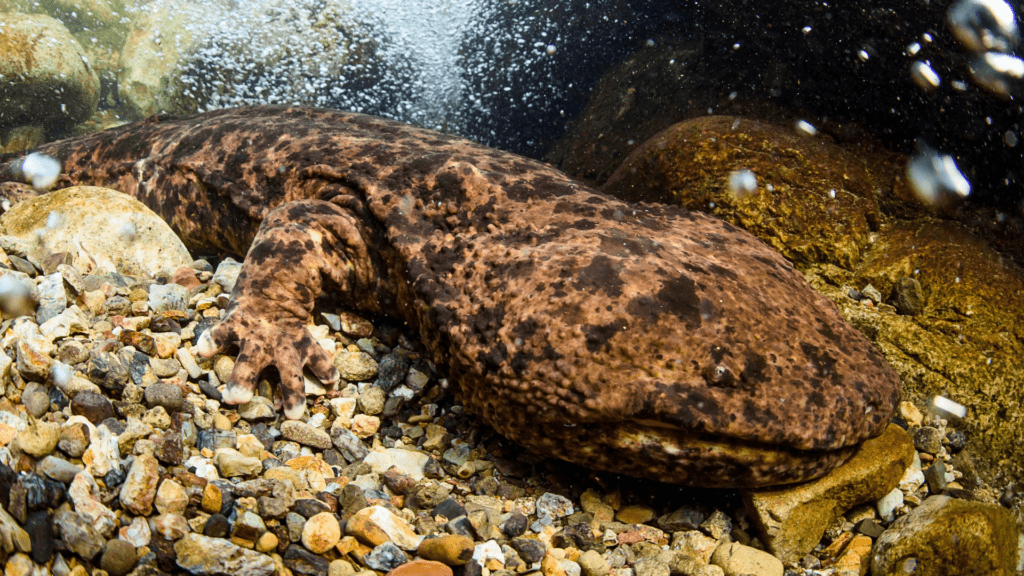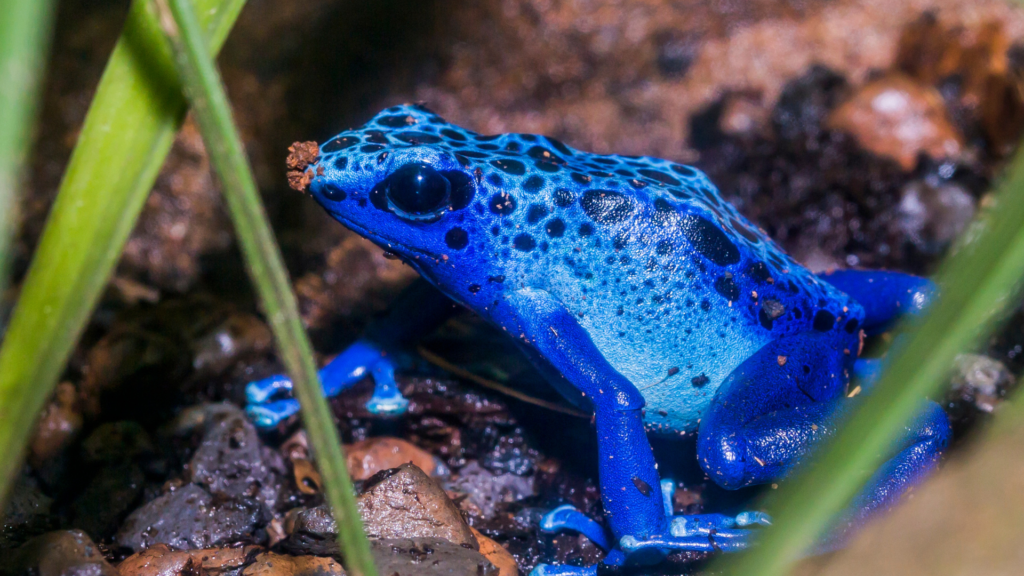Strawberry Poison Dart Frog (Oophaga pumilio) is a vibrant and fascinating amphibian that has captured the attention of scientists and nature enthusiasts alike. Known for its striking red, blue, or yellow skin coloration, this small but highly toxic frog is native to the rainforests of Central America. Despite its small size, the strawberry poison dart frog is a significant player in its ecosystem and offers a unique glimpse into the world of amphibians.
Physical Description
Measuring only about 1 to 2 inches (2.5 to 5 cm) in length, the strawberry poison dart frog is small in size, but its appearance is anything but inconspicuous. Its bright coloration serves as a warning to potential predators about its toxicity. These frogs are typically red with blue or black markings, but the color can vary greatly depending on the geographic region and environmental conditions. Some populations exhibit blue, green, or orange hues, adding to their diversity.
The skin of the strawberry poison dart frog contains potent alkaloids that make it highly toxic to predators. These toxins, which are derived from the frog’s diet of ants and other small invertebrates, are used as a defense mechanism against predation.
Habitat and Distribution
The strawberry poison dart frog is primarily found in the humid rainforests of Central America, particularly in countries like Panama, Costa Rica, Nicaragua, and Honduras. These frogs are typically found on the forest floor, in leaf litter, and along streams and rivers, where they can find a steady supply of food and moisture. The species thrives in tropical environments, where temperatures remain consistent, and the environment provides shelter and abundant food sources.
Due to their dependence on specific habitat conditions, strawberry poison dart frogs are highly sensitive to changes in their environment, such as habitat destruction or climate change.
Diet and Feeding Behavior
As a carnivorous amphibian, the strawberry poison dart frog feeds primarily on small invertebrates, including ants, termites, and mites. The frog’s diet is the primary source of the toxins found in its skin. It is believed that the alkaloids in the frogs’ skin are a result of consuming certain species of ants, which contain these toxic compounds.
In the wild, these frogs are active hunters, using their keen sense of sight to locate their prey. Their diet may also include other small arthropods that inhabit the rainforest floor. The frogs’ diet plays a crucial role in determining their toxicity—when raised in captivity and fed a diet devoid of toxic ants, these frogs are non-toxic.
Reproduction and Life Cycle
The strawberry poison dart frog has a fascinating reproductive strategy. Males are highly territorial and call out to attract females with a series of chirps and whistles. Once a female is attracted, the male will lead her to a suitable site for laying eggs, typically in moist, sheltered areas near water.
After the eggs hatch, the tiny tadpoles are carried by the female to small pools of water, often in the form of bromeliads, where the tadpoles develop. The tadpoles feed on algae and other small organic matter in the water until they undergo metamorphosis and transform into juvenile frogs. The entire process can take anywhere from two to three months, depending on environmental conditions.
The strawberry poison dart frog exhibits a unique form of parental care, with females taking an active role in ensuring the survival of their offspring. Unlike many amphibians, the female strawberry poison dart frog provides transportation for the tadpoles, carrying them to suitable aquatic habitats.
Conservation Status and Threats
The strawberry poison dart frog is currently listed as Least Concern by the International Union for Conservation of Nature (IUCN). However, the species faces several threats, including habitat destruction, the pet trade, and the introduction of non-native species. Deforestation and pollution are major threats to the frog’s rainforest habitat, while the pet trade also contributes to population declines in some regions.
In recent years, conservation efforts have been focused on protecting the natural habitats of these frogs, and breeding programs have been established in captivity to ensure the survival of the species. Efforts to curb the illegal pet trade and habitat destruction are critical to maintaining healthy populations of strawberry poison dart frogs.
Fascinating Facts about the Strawberry Poison Dart Frog
- Vibrant Colors: The strawberry poison dart frog’s bright red, yellow, or blue skin serves as a warning to predators about its toxicity.
- Toxicity: The frog’s skin contains potent alkaloids that make it highly toxic to potential predators, including snakes and birds.
- Small Size, Big Impact: Despite being only about 1 to 2 inches long, the strawberry poison dart frog plays an important role in its ecosystem as both a predator and prey.
- Unique Reproductive Strategy: The female frog actively transports her tadpoles to suitable water sources, providing a rare example of parental care in amphibians.
- Cultural Significance: The bright coloration of the strawberry poison dart frog has made it a subject of fascination for scientists and has earned it a place in various indigenous cultures.
Conclusion
The strawberry poison dart frog is a unique and colorful species that provides valuable insights into the world of amphibians. With its fascinating reproductive strategies, striking appearance, and important role in the ecosystem, this species continues to captivate researchers and conservationists. While currently not at high risk, ongoing efforts to protect its habitat and curb threats like habitat loss and illegal trade are crucial for ensuring that future generations can enjoy the vibrant presence of these remarkable frogs.
faq’s
1. What is the Strawberry Poison Dart Frog?
The Strawberry Poison Dart Frog (Oophaga pumilio) is a small, brightly colored frog native to Central America, known for its toxicity and vivid appearance.
2. Where does the Strawberry Poison Dart Frog live?
It inhabits tropical rainforests in Nicaragua, Costa Rica, and Panama, often found in humid, leaf-littered areas near water sources.
3. Why is the Strawberry Poison Dart Frog toxic?
Its toxicity comes from alkaloid compounds obtained through its diet of ants and mites, making it dangerous to predators.
4. How toxic is the Strawberry Poison Dart Frog?
While not as deadly as some other poison dart frogs, its skin toxins can cause irritation, muscle paralysis, or even cardiac issues in predators.
5. What does the Strawberry Poison Dart Frog eat?
It primarily feeds on small insects like ants, mites, and termites, which contribute to its toxicity.
6. Can the Strawberry Poison Dart Frog be kept as a pet?
Yes, but captive-bred frogs are non-toxic due to a different diet. They require high humidity, proper enclosures, and a steady diet of small insects.
7. Why do Strawberry Poison Dart Frogs have different colors?
This species exhibits high color variation (polymorphism), with over 15 morphs, including red, blue, yellow, and green patterns, depending on location.
8.How does the Strawberry Poison Dart Frog reproduce?
Males call to attract females, who lay eggs on land. After hatching, the female carries tadpoles on her back to small water-filled plants (bromeliads).
9. Is the Strawberry Poison Dart Frog endangered?
It is currently listed as Least Concern, but habitat destruction and climate change pose threats to its population.
10. How long does the Strawberry Poison Dart Frog live?
In the wild, they typically live 3–6 years, but in captivity, they can live over 10 years with proper care.

